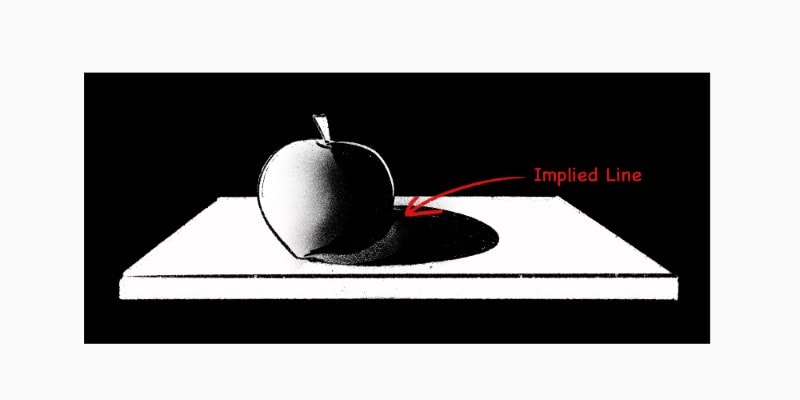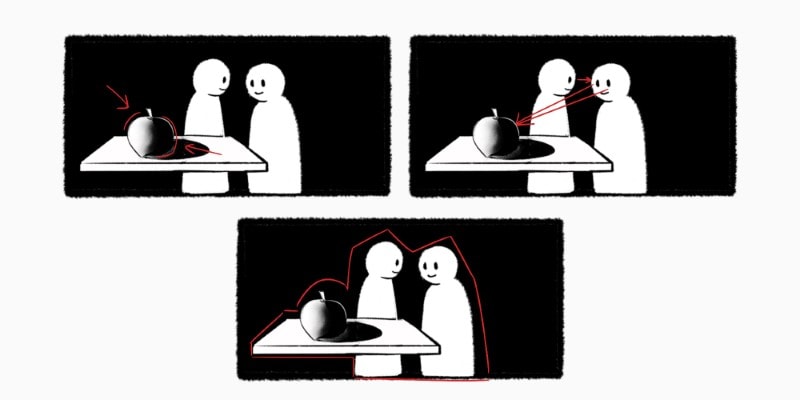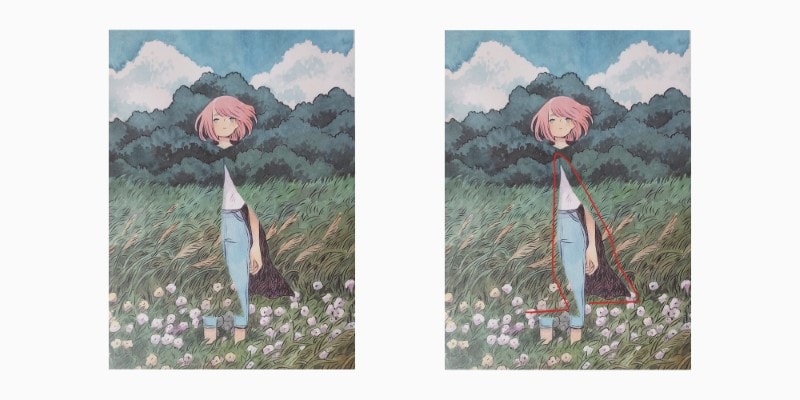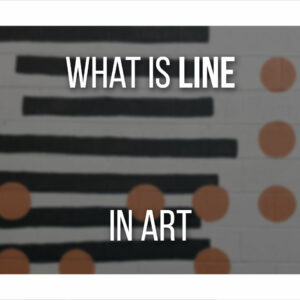Lines come in more forms than you might expect. And that’s true for implied lines (as well as actual lines!).
When drawing lines, most artists will naturally think about the actual line marks that they’re adding to their canvas or paper. But there is another type of line, and those are implied lines.
These are generally lines implied differently, from patterns in your artwork to invisible connections between elements.
But let’s go over implied lines, how you can use implied lines in your artwork, and helpful examples!
Table Of Contents
What Are Implied Lines In Art?
Implied lines in art aren’t drawn, but instead are created through shapes, patterns and implicit movement from the composition.
They guide a viewer’s eye through the entire art piece, creating a sense of movement and direction between elements.

We’ll include a few examples of implied lines in art further down this article, but you can usually see implied lines coming from where a character is looking at.
Not only that, but the way the entire background and position of different elements are portrayed in the artwork also create implied lines for the viewer.
For example, artists who are used to painting without an underneath line sketch are used to using implied lines in their artwork!
Implied lines often appear when there is a contrast between elements.
So, the stronger the contrast, the easier it is to see the implied lines that the artist wanted to showcase.
Implied lines are very powerful in artwork since they can reveal hidden layers of information that you wouldn’t realize at first glance.
But how exactly can you use implied lines in your artwork?
Implied Lines VS Actual Lines
Lines can be categorized into two main types: implied lines and actual lines.
Actual lines are the lines you’re used to seeing on a piece of paper or canvas. They are tangible, and consist of very clean marks that define shapes, elements, and can create a sense of motion.

Since actual lines are created with a medium such as a pencil or brush, they’re very easy to see.
They create a sense of structure, and are made by the original artist with the intention of representing continuous lines in their art piece.
Implied lines are very subtle and can even be considered abstract. They allow the viewer to be guided through the art piece subconsciously, going from one element to the other through the help of these implied lines.
These can be considered invisible lines that connect different elements in an art piece seemingly.
While there are many ways to create implied lines (and I’ll give a step-by-step example very soon), these types of lines are usually created by either a high contrast between elements in an artwork.
Or by the way a character or several characters are looking at each element.
Both implied and actual lines are very important in art, and they should be understood (on both how to create them and when to use them) for a deeper meaning of each engaging art piece.
How To Make An Implied Line
You’re most likely already using implied lines in your art, but if you want to make an implied line more consciously, here’s a complete step-by-step guide on how to make an implied line.
1) Start by Planning Your Artwork

First, you need to figure out what elements will be present in your artwork.
For example, a scene with two people and an apple on a table.
So the elements would be:
- Person A
- Person B
- Apple
- Table
- Environment/Background
That’s enough for now. Let’s move on to the next step!
2) Plan The Position Of The Elements
Now we need to position all our elements in our artwork.

Let’s keep the two people together next to each other on the right, and the apple on the left, on top of the table.
This way, we’ll have a nice composition without all the elements being too close together.
3) Focus On The Relation Of The Elements For The Implied Lines
It’s time to focus on the implied lines!
There are a few ways we can do this, as we’ve mentioned before.
So let’s start by adding shadows to the apple on the table, but without focusing on actual lines.
Let’s also make one of our characters look at the other, and another look at the apple on the table.

Are you starting to see the implied lines?
You can see implied lines on:
- the shading of the apple
- where the characters are looking at
- the overall contrast between the characters and the background
Implied lines are everywhere!
Examples Of Implied Lines In Art
What better way to understand implied lines in art than to see some great examples in actual paintings?
So here are some of the best examples of implied arts to inspire you.
Quembel, by Brian Froud

Brian Froud creates amazing fantastical creatures straight out of a fairytale.
This artist often uses contrast to give form to his characters, as seen in this example.
Quembel’s dark hair perfectly frames and forms most of her face and upper body.
Grandma’s Cloak, by Heikala

Heikala creates magnificent pieces, most often using paints and watercolors.
In Grandma’s Cloak, we can see a great example of implied lines in the opening of the imaginary cloak, allowing us to see the character beneath it!
Fishbowl, by Loish

One of the most popular artists nowadays. In this piece, Loish guides our eyes to the fishbowl by creating an implied line between the character’s eyes and the bowl itself.
First, we see the character; then, we’re gently guided to the object in the corner of the painting.
Mistress And Maid, by Johannes Vermeer

Vermeer paintings, as well as many other artworks of his time, take great advantage of contrast.
An often dark background, paired with a bright light source, illuminates its characters. This contrast allows us to discern the figures in the painting without using an actual line.
We can also find an implied line following the imaginary eye-line of each character, guiding us once again throughout the whole scene being played!
And that’s it for our article on implied lines.
If you’d like to learn about other Elements of Art click here!
And check out the differences between Contour Drawing and Gesture Drawing to take your art to the next level!
Patricia Caldeira is the main writer here at Don Corgi. She's an art teacher with over 20.000 happy students across many platforms and courses!
Enjoy your stay and as always:
Keep on drawing!



